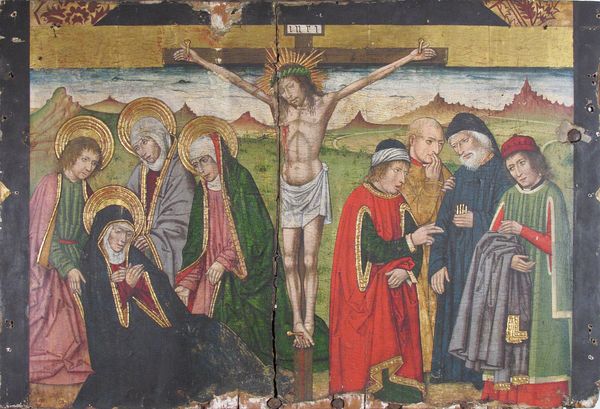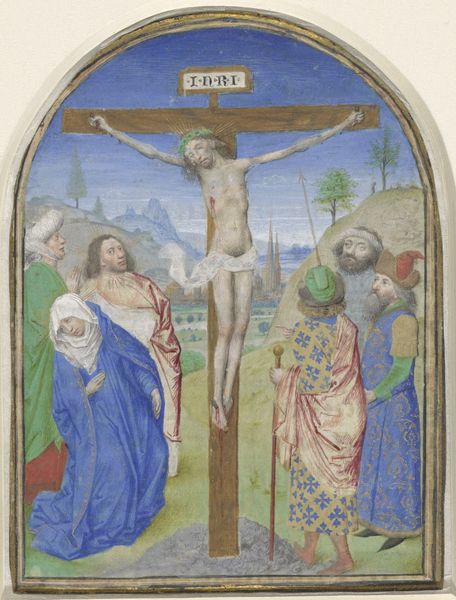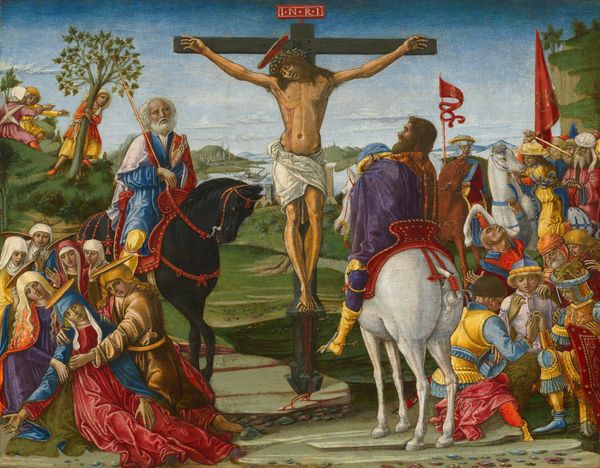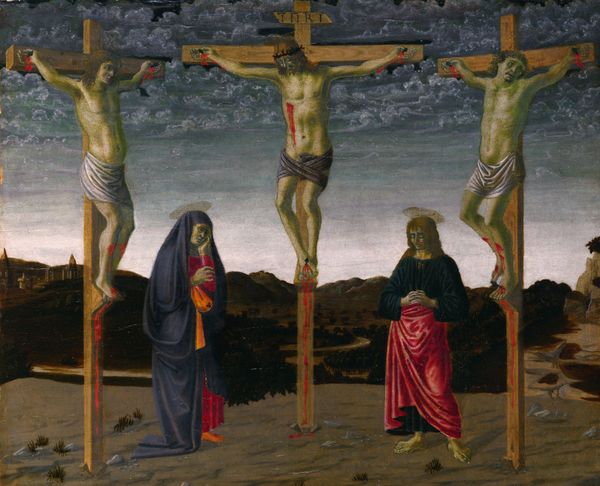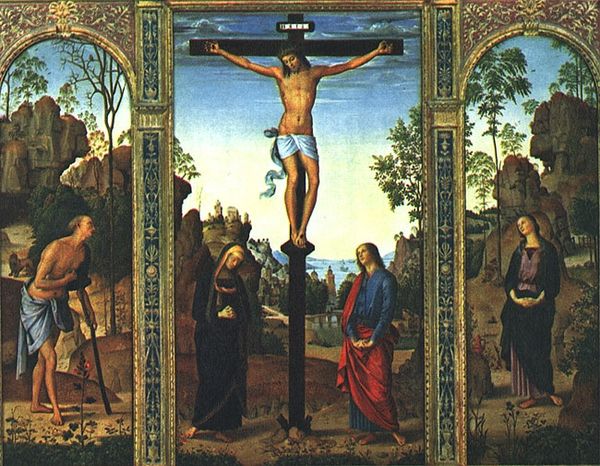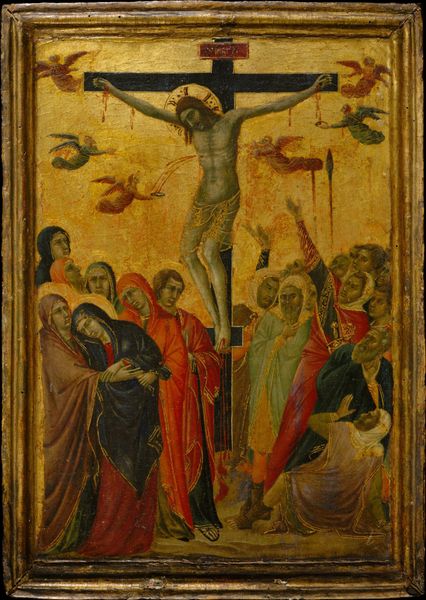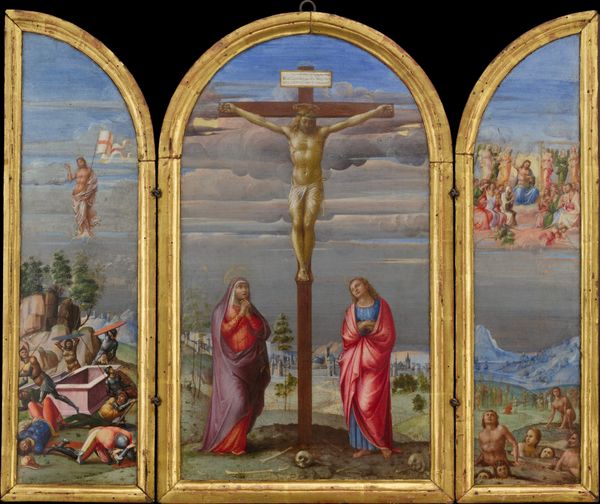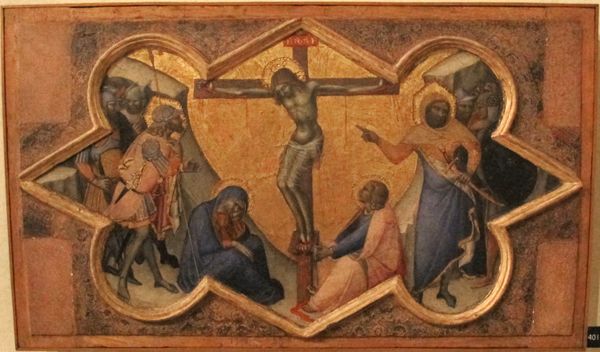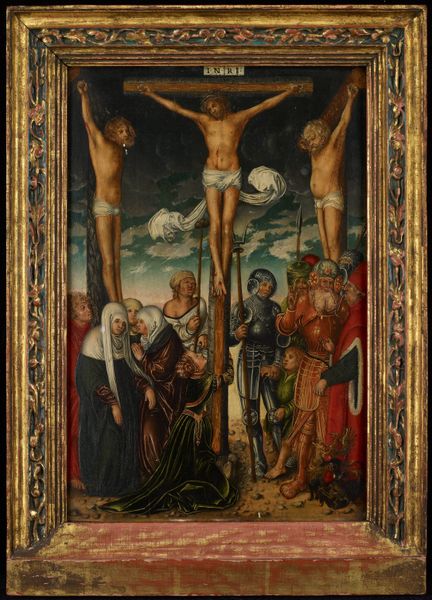
The Bearing of the Cross, The Crucifixion and The Lamentation 16th century
0:00
0:00
panel, painting, oil-paint
#
portrait
#
panel
#
narrative-art
#
painting
#
oil-paint
#
figuration
#
11_renaissance
#
oil painting
#
jesus-christ
#
13_16th-century
#
crucifixion
#
history-painting
#
italian-renaissance
Dimensions: 57.7 x 111 x 1.4 cm
Copyright: Public Domain
Curator: What strikes me immediately is the way this altarpiece, dating from the 16th century and attributed to Girolamo di Benvenuto, divides into three distinct scenes, like frames of a graphic novel. Editor: The triptych format is jarring, though. It sanitizes such a violent event and frames it in a devotional tone that lacks a real acknowledgement of its sociopolitical significance. Curator: I disagree. The symbolism here is potent. We have the Bearing of the Cross on the left, a dynamic procession full of earthly struggle. Then, the Crucifixion in the center, emphasizing divine suffering. Finally, The Lamentation to the right depicts earthly mourning. These distinct panels offer differing paths of empathy. Editor: The path of empathy feels extremely controlled, curated for a very specific audience, no? I am not certain I find solace. The virgin's face is full of distress; one sees only the male agony celebrated; where does justice figure into this picture? Is that not an oversight? Curator: I do think it’s worth exploring the continuity of color. See how the pink robes reappear throughout all three scenes? It could represent shared humanity or the persistent thread of love, even amidst brutality and bereavement. It gives the artwork coherence. Editor: Perhaps it unifies, but also normalizes. I see that pink reemerge, and think instead of the cycle of violence; how these narratives reinforce structures of power, and how little room they make for any questioning or disruption of that. Curator: You raise an important point about how narratives shape our understanding. The repetition could be interpreted as cyclical, reinforcing the inevitability of suffering, as much as it is the idea of sacrifice. I admit I never perceived this viewpoint. Editor: It's crucial to remember the purpose this panel likely served: to encourage both faith and fealty, especially amongst those already dispossessed. So the question is: in light of such brutality and injustice, does focusing only on the pathos really empower anyone or even encourage a meaningful reflection? I would like to imagine new stories—stories that emphasize resilience. Curator: And, yes, that resilience—the struggle shown through individual responses to universal suffering—does become clear thanks to this polyptych and its creator from so long ago. I leave more reflective than before.
Comments
No comments
Be the first to comment and join the conversation on the ultimate creative platform.
